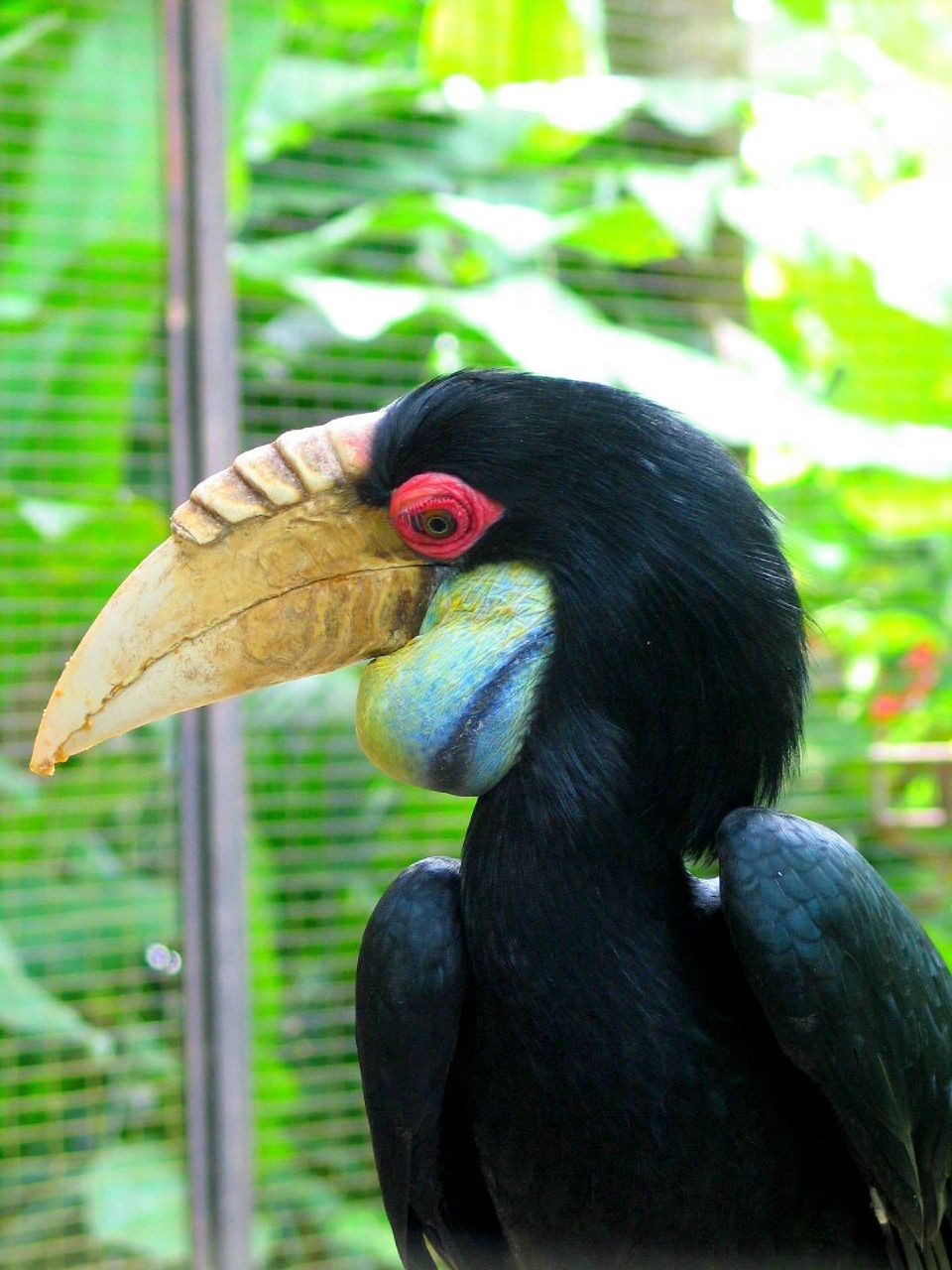Wreathed Hornbill
A species of Hornbill Scientific name : Rhyticeros undulatus Genus : Hornbill
Wreathed Hornbill, A species of Hornbill
Botanical name: Rhyticeros undulatus
Genus: Hornbill
Content
Description General Info
Description
The wreathed hornbill (Rhyticeros undulatus), also known as the bar-pouched wreathed hornbill, is a species of hornbill found in forests from far north-eastern India and Bhutan, east and south through mainland Southeast Asia and the Greater Sundas in Indonesia, except Sulawesi. It is 75–100 cm (30–39 in) long. Males weigh from 1.8 kg (4.0 lb) to 3.65 kg (8.0 lb), and females weigh from 1.36 kg (3.0 lb) to 2.7 kg (6.0 lb). Both sexes are similar to the respective sexes of the closely related plain-pouched hornbill, but the wreathed hornbill can be recognized by the dark bar on the lower throat (hence the alternative common name, bar-pouched). Though commonly considered monotypic, evidence suggests some geographical variation in the appearance. The wreathed hornbill has escaped or been deliberately released in to Florida, USA, but there is no evidence that the population is breeding and may only persist due to continuing releases or escapes.[1] 
Size
85 cm
Nest Placement
Cavity
Feeding Habits
Wreathed Hornbill predominantly consumes fruit, supplemented by small animals, including bird nests. It also eats reptiles, snails, insects, centipedes, millipedes, and crabs, showing an adaptability in feeding behavior to include varied prey.
Habitat
Wreathed Hornbill is primarily found in extensive tracts of primary evergreen forests located in tropical regions. The species inhabits foothill zones but can also be found at elevations up to 2560 meters. Wreathed Hornbill's range extends into areas that have undergone selective logging, illustrating some degree of adaptability. Additionally, wreathed Hornbill occupies coastal forests, expanding its habitat preferences within its geographical distribution.
Dite type
Frugivorous
General Info
Feeding Habits
Bird food type

Fruit
Species Status
VULNERABLE. Still locally fairly common in a few areas across its wide range, which includes several large reserves and at least seven national parks, e.g. Khao Yai.
